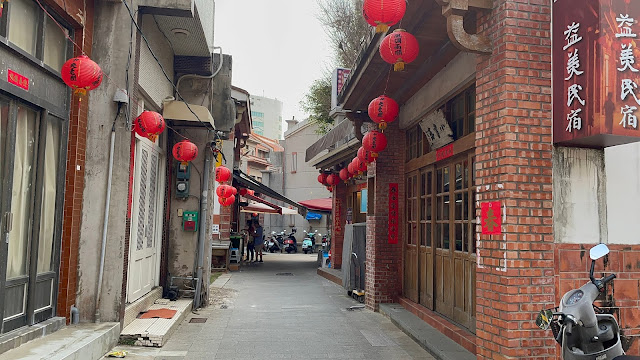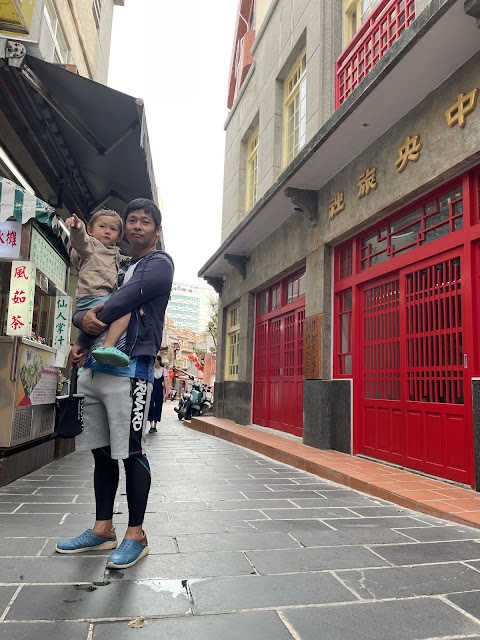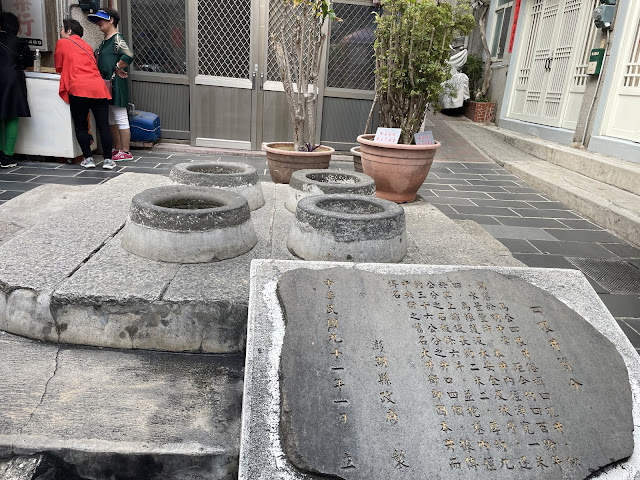Travel Date: 27/03/2021 - 01/04/2021
It's our first time visiting Penghu, and I'll describe the process, prices, our accommodation, and the places we visited in separate posts as I have a lot planned.
We started by visiting the historical Ash Kilns and the famous attraction known as "Moses Parted the Sea," where we witnessed the low tide creating a pathway to a nearby small island. We also explored Nanliao Village, renowned for its traditional fishing settlement, with many interesting buildings to see.
In addition to the main island, we ventured to the smaller islands connected by sea-crossing bridge. On Yuwengdao Island in Xiyu Township, the furthest island, we visited the Yuwengdao Lighthouse, the Sanxian Pagodas with their breathtaking views of the sea, and observed the fake cannon. We also enjoyed the natural beauty of Daguoye Columnar Basalt, Niuxin Mountain and Paradise Road. In Xiyu, there are several forts worth exploring, such as the Western Fort, Eastern Fort, and the Five-hole bunker.
Zhuwan Temple left me with mixed feelings as I enjoyed seeing the turtles but felt sorry for them living in captivity underground.
Chen Erkan Historical House, along with the entire village of unique old buildings, is a famous place to visit in Penghu.
Going south on Magong Island, we explored the remains of a Dutch castle (actually a memorial), as well as the South and North Pagodas, which have unique and intriguing designs, though their exact story remains unknown.
Magong City is also filled with historical architecture. We explored Zhongyang Old Street, old wells, Mazu Temple, and the sole remaining city gate.
We discovered a place in Penghu where you can interact with starfish and sea urchins, which was particularly interesting for kids as they could learn more about the underwater world.
Another fort we visited, Jinguitou Fort, was once used to defend the island of Penghu.
For those interested in temples and religions, the Confucius Temple is worth a visit.
In just four days, we experienced an incredible amount. Penghu is truly beautiful, and I hope to revisit someday in the future.
On our third day in Penghu, we dedicated our time to exploring Magong City. The city area is quite extensive, encompassing not only the town itself but also the southern part of the island, which is a half-hour drive away from the bustling town. As an avid traveler, I make it a point to capture videos of every place I visit, although this takes considerably more time than simply taking photos. The most challenging part is the editing and uploading process, which requires hours upon hours of work.
Zhongyang Old Street (中央老街 )
One of the notable attractions in Magong City is Zhongyang Old Street, located adjacent to Tianhou Temple. This street has been a part of the local community since the founding of Magong. It is the oldest street in Penghu, stretching just two hundred meters and featuring traditional Fujian-style architecture. Many local products, such as Ruxiang and Shigong's Temple, have flourished in this area. Visitors can find must-try items like brown sugar cake, scallop paste, and Penghu's famous ice cream here. The nostalgic streets and alleys exude a distinct charm, with Baroque Chinese medicine shops and old Japanese hotels showcasing remnants of the past. Zhongyang Street, also known as the "first street," was officially designated as a "special area for preservation of historical sites" in 1973. In 1983, the residents formed the "Penghu First Street Revitalization Association," and with government support, the old street was restored and redeveloped into its current Fujian-style architectural design.

Wenjun Well (萬軍井)
Another spot to visit is Wenjun Well, located on the right side of the Shi Gong Ancestral Hall, formerly known as Ma Gong Dajing. Legend has it that during the Qing Dynasty, Admiral Shi Lang led a fleet expedition to Penghu to combat the Ming and Zheng navy. Fatigued soldiers passing through Penghu sought respite, and Shi Lang prayed for a well with abundant water using the emperor's sword. This well, known as Wanjun Well, was made available to all for drinking water. It is now classified as a national third-class monument, along with the Shi Gong Temple.
Four-eye Well (四眼井)
The Four-eye Well, the oldest ancient well in Penghu County, is another intriguing attraction. Established in the early Ming Dynasty (1592), this well appears to have four circular water intakes. However, it is essentially a single large well with ample water supply. The four circular water intakes were created by covering the well with six granite strips and surrounding it with red bricks. This well, which never runs dry regardless of rain or drought, played a crucial role in providing residents of Zhongyang Old Street with a source of living and drinking water.
Mazu Temple / Tianhou Palace (澎湖天后宮)
Tianhou Palace, also known as Mazu Temple, traces its origins back to the Ming Dynasty in Penghu. The temple's documented history dates back to 1604 when the Dutch East India Company arrived in Penghu. However, the temple has experienced its share of trials and tribulations over the centuries.
In 1664, after the Dutch East India Company lost its grip on Taiwan, Balthasar Bort, feeling disheartened and indignant, set fire to Tianhou Palace and the surrounding houses. This destructive act resulted in the temple's complete destruction.
In 1885, another challenge arose when the French army invaded Penghu, sparking the Battle of Penghu. The conflict took its toll on the temple, causing further damage.
However, resilience prevailed, and reconstruction efforts commenced in 1919. During the Japanese occupation, the temple underwent significant modifications. Notably, the Qingfeng Pavilion was added, later serving as a gathering place for local intellectuals. The architectural style and layout from that era have been preserved and can still be observed today.
In 1978, plans were made to rebuild the aging temple. However, just before the groundbreaking ceremony, Chen Qilu, an academician of the Academia Sinica, intervened, ordering a halt to the construction. This decision aimed to preserve the temple's historical authenticity. Consequently, the old temple remained in its original state.
The significance of Tianhou Palace as a historical site became widely recognized. On December 28, 1983, the Ministry of Internal Affairs designated it as one of the first batch of 15 first-class monuments. This classification marked the temple's status as a national heritage site.
Throughout its storied past, Tianhou Palace has endured hardships, embodying the spirit of resilience. It stands as a testament to the rich cultural heritage of Penghu. Despite the challenges and changes over time, the temple remains an iconic symbol, evoking a sense of reverence and preserving the historical legacy of the region.
Shuncheng Gate (順承門)
Shuncheng Gate, built in 1886 following the Sino-French War, is the small west gate of Penghu City (Magong). It was one of six gates in the city, including Chaoyang, Jixu, Gongchen, and Yingxun. Presently, only the Shuncheng Gate remains intact, along with the Great West Gate and part of the western wall. Despite the changes over time, Magong City retains its status as the largest preserved city within its current urban boundaries.


















Thanks for the informative write-up!
ReplyDelete